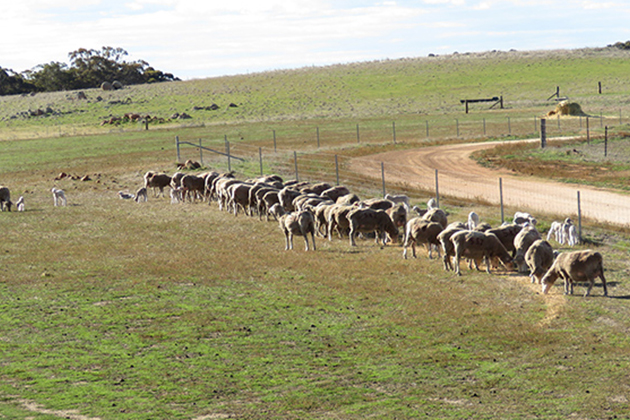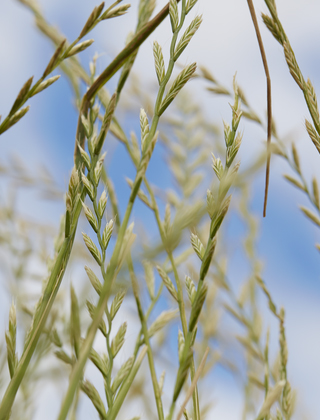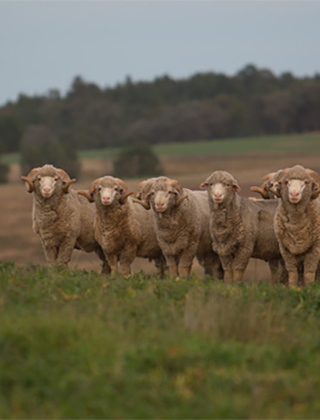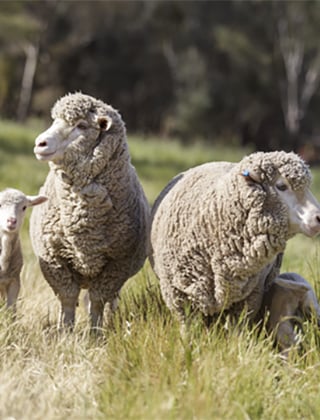Supplementary feeding R&D for lamb survival

An AWI co-funded project is comparing the effects of using trail feeding or self-feeders during lambing on ewe behaviour and lamb survival. The project’s results will be used to create supplementary feeding guidelines for sheep producers to optimise lamb marking rates.
Supplementary feeding at one of the project’s research sites.
An AWI co-funded project is comparing the effects of using trail feeding or self-feeders during lambing on ewe behaviour and lamb survival. The project’s results will be used to create supplementary feeding guidelines for sheep producers to optimise lamb marking rates.
Supplementary feeding is often required to meet the nutritional demands of ewes lambing in autumn and when feed-on-offer (FOO) is limited during winter or early spring.
However, there is no industry consensus on optimal supplementary feeding strategies for lambing ewes, a fact highlighted during consultation with sheep producers who are actively seeking advice on the matter.
“A survey of producers in southern Australia showed that 92% of them believe further research is warranted into the best supplementary feeding regimes to optimise lamb survival,” said AWI Project Manager, Reproduction & Nutrition, Emmah Goldsmith.
A project jointly funded by AWI, MLA and Murdoch University with collaborators Charles Sturt University, Nutrien Ag Solutions and Dynamic Ag, is currently under way to remedy the situation.
“The overall project is evaluating strategies for supplementary feeding at lambing via trail feeding, and self-feeders, and aims to quantify the impacts on lamb survival to marking on commercial farms across southern Australia,” Emmah said.
“It will also assess changes in mob behaviour associated with the feeding method using sensor technology.
“The ultimate outcome from this project is to produce guidelines for sheep producers to increase lamb marking rates.”
A significant proportion of producers in southern Australia lamb ewes onto dry feed in autumn. Increasing climate variability also means that a greater number of producers may have dry or limited green feed available when lambing in winter or even early spring.
Anecdotal evidence has suggested that supplementary feeding ewes at lambing may cause them to abandon their lambs which could reduce lamb survival. However, there is conflicting opinion as to whether trail feeding or the use of self-feeders is more favourable for lamb survival.
Research sites
Dr Amy Lockwood of Murdoch University says the project’s research sites are being located in both the medium to high and the low rainfall zones to capture variation in environmental and management conditions, including the size of lambing paddocks in which ewes are being supplementary fed.
“At least 24 on-farm research sites will be established across Western Australia, South Australia, Victoria and New South Wales during the project,” she said.
“We have so far completed work for our first trial at 10 research sites and are currently seeking more sheep producers across southern Australia to host the trial on their farms. We’re keen to hear from anyone that’s interested in being involved.” See the section below for more information and to find out how to get involved.
Amy says sensor technology has been used at four of the sites to investigate the effects of supplementary feeding methods on ewe behaviour during lambing. Sensor technology will be used at a further four to five sites for the initial stage of the project and then be used at up to eight sites for stage two of the project which will involve more intensive work.
The researchers also aim to investigate other factors that influence supplementary feeding on lamb survival, such as the effects of the proximity of trail feeding or self-feeders to water or the number of self-feeders in the paddock on ewe behaviour during lambing.
Project outputs
The project team will complete a detailed benefit-cost analysis for each feeding strategy.
At the end of the project, comprehensive guidelines for supplementary feeding ewes during lambing will be produced to help sheep producers improve their marking rates.
The guidelines will be rolled out to producers via existing networks such as AWI’s State Grower Networks along with extension programs such as the AWI-funded Lifetime Ewe Management course.
Your chance to get involved!
Producer collaborators needed
The research team is seeking sheep producers across WA, SA, Vic and NSW that pregnancy scan at least 300 single-bearing ewes and 160 twin-bearing ewes, and would be interested in comparing the impacts of supplementary feeding ewes during lambing with self-feeders and by trail feeding on lamb survival.
Interested producers can get in touch with the project leader(s) for their state to find out more:
Western Australia
Serina Hancock
s.hancock@murdoch.edu.au
0403 570 823
South Australia
Daniel Schuppan
daniel.schuppan@nutrien.com.au
0477 315 931
Victoria
Steve Cotton
s.cotton@dynamicag.com.au
0447 352 321
New South Wales
Susan Robertson
surobertson@csu.edu.au
02 6933 4199
This article appeared in the March 2023 edition of AWI’s Beyond the Bale magazine. Reproduction of the article is encouraged.















